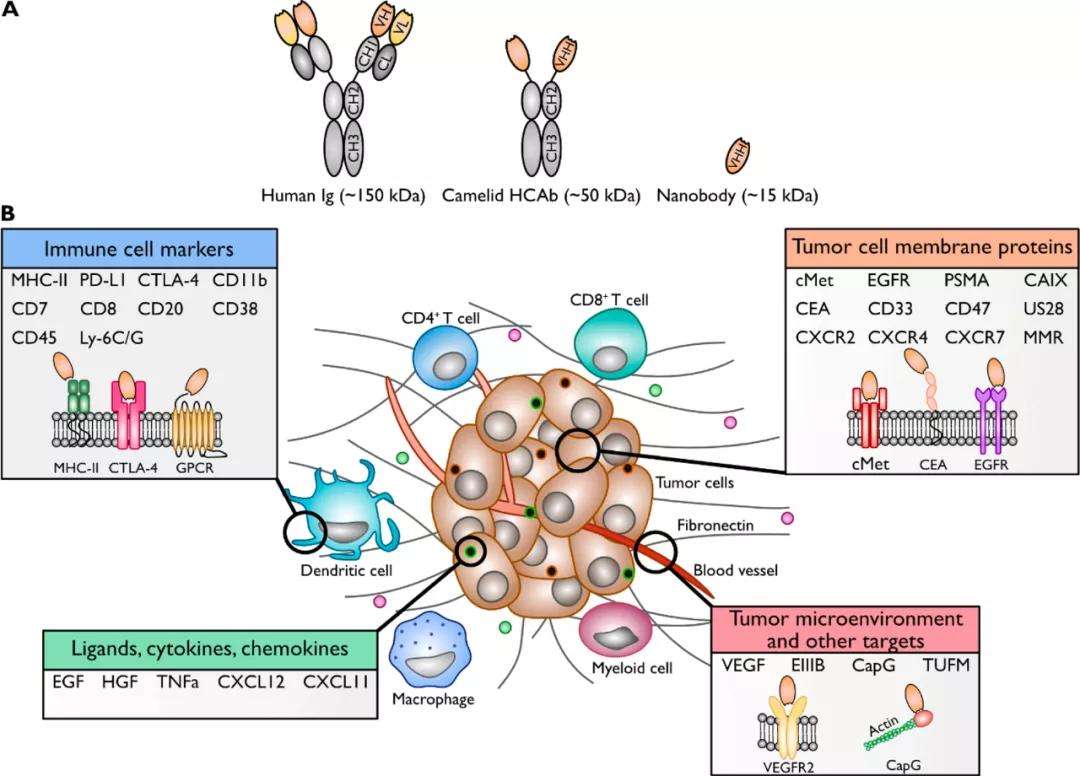创新背景
自发明以来,化疗已被证明是治疗多种癌症的宝贵工具,但它有很大的缺点。除了杀死癌细胞外,它还会杀死健康细胞,如毛囊中的细胞(导致秃头),以及那些排列在胃中的细胞(引起恶心)。
创新过程
加州理工学院的科学家有更好的解决方案:基因工程,声控细菌寻找并破坏癌细胞。研究人员开发出了一种特殊的大肠杆菌,当注射到患者体内时,它会寻找并渗透癌性肿瘤。一旦细菌到达目的地,就可以触发它们以产生具有超声波脉冲的抗癌药物。
这项技术的目标是利用工程益生菌浸润肿瘤的能力,同时使用超声波激活它们以在肿瘤内释放有效的药物。
他们工作的起点是一种名为Nissle 1917的大肠杆菌菌株,该菌株被批准用于人类医疗用途。在被注射到血液中后,这些细菌扩散到全身。然后,患者的免疫系统会破坏它们——除了那些已经定植于癌性肿瘤的细菌,它们提供了免疫抑制的环境。

为了将细菌变成治疗癌症的有用工具,研究小组将它们设计成包含两组新的基因。一组基因用于产生纳米抗体,纳米抗体是治疗性蛋白质,可关闭肿瘤用来阻止免疫系统抗肿瘤反应的信号。这些纳米抗体的存在允许免疫系统攻击肿瘤。另一组基因就像一个热开关,当细菌达到特定温度时,它会打开纳米抗体基因。
通过插入温度依赖性和纳米抗体基因,该团队能够产生细菌菌株,这些菌株仅在加热到42-43摄氏度的触发温度时产生肿瘤抑制纳米体。由于正常人体温度为37摄氏度,因此这些菌株在注射到人体时不会开始产生抗肿瘤纳米体。相反,它们悄悄地在肿瘤内生长,直到外部源将它们加热到触发温度。
研究团队使用了聚焦超声(FUS)来加热位于一个特定位置的细菌。FUS类似于用于对内脏器官或子宫内生长的胎儿进行成像的超声,但强度更高,并且聚焦在紧密的点上。将超声波聚焦在一个点上会导致该位置的组织升温,但不会使其周围的组织升温;通过控制超声波的强度,研究人员能够将该组织的温度提高到特定程度。

为了测试他们的工程细菌菌株是否按预期工作,研究小组将细菌细胞注射到患有肿瘤的实验室小鼠中。在给细菌时间浸润肿瘤后,研究小组使用超声波来加热它们。
通过一系列试验,研究人员发现,用这种细菌和超声波治疗的小鼠比仅用超声波治疗的小鼠,仅用细菌治疗的小鼠以及根本没有治疗的小鼠显示出更慢的肿瘤生长。
创新关键点
为了将细菌变成治疗癌症的有用工具,研究小组将它们设计成包含两组新的基因。一组基因用于产生纳米抗体,纳米抗体是治疗性蛋白质,可关闭肿瘤用来阻止免疫系统抗肿瘤反应的信号。这些纳米抗体的存在允许免疫系统攻击肿瘤。另一组基因就像一个热开关,当细菌达到特定温度时,它会打开纳米抗体基因。
创新价值
新型声控细菌可在不伤害正常细胞的前提下对癌细胞进行针对性地有效治疗。
The new voice-activated E. coli seeks out and destroys cancer cells
Scientists at the California Institute of Technology have a better solution: genetically engineered, voice-activated bacteria that seek out and destroy cancer cells. Researchers have developed a special strain of E. coli that seeks out and permeates cancerous tumors when injected into patients. Once the bacteria reach their destination, they can be triggered to produce cancer drugs with ultrasonic pulses.
The goal of this technology is to exploit the ability of engineered probiotics to infiltrate tumors while using ultrasound to activate them to release effective drugs inside tumors.
The starting point for their work is an E. coli strain called Nissle 1917, which is approved for human medical use. After being injected into the bloodstream, the bacteria spread throughout the body. The patient's immune system then destroys them - except for those bacteria that have colonized the cancerous tumor, providing an immunosuppressive environment.
To turn the bacteria into useful tools for treating cancer, the team designed them to contain two new sets of genes. One set of genes is used to produce nanoantibodies, which are therapeutic proteins that turn off signals that tumors use to block the immune system's anti-tumor response. The presence of these nanoantibodies allows the immune system to attack the tumor. Another set of genes acts as a heat switch, turning on the nano antibody genes when the bacteria reaches a certain temperature.
By inserting temperature-dependent and nanoantibody genes, the team was able to generate bacterial strains that produced tumor suppressor nanobodies only when heated to a trigger temperature of 42-43 degrees Celsius. Because normal human temperature is 37 degrees Celsius, these strains do not start producing anti-tumor nanobodies when injected into humans. Instead, they quietly grow inside the tumor until an external source heats them to the trigger temperature.
The team used focused ultrasound (FUS) to heat bacteria in a specific location. FUS is similar to ultrasound used to image internal organs or fetuses growing in the womb, but is more intense and focuses on tight points. Focusing an ultrasound wave on a spot causes the tissue at that spot to heat up, but not the surrounding tissue. By controlling the intensity of the ultrasound, the researchers were able to raise the temperature of the tissue to a specific point.
To test whether their engineered bacterial strain worked as intended, the team injected bacterial cells into laboratory mice with tumors. After giving the bacteria time to infiltrate the tumor, the team used ultrasound waves to heat them.
Through a series of tests, the researchers found that mice treated with this bacteria and ultrasound showed slower tumor growth than mice treated with ultrasound alone, mice treated with bacteria alone, and mice treated with no treatment at all.
智能推荐
临床医学创新 | 开发“纳米颗粒”可帮助医疗人员准确识别头颈部癌症
2022-09-27杜克大学(Duke University)的研究人员开发了一种名为“Nanorattles”的独特纳米粒子,新的纳米颗粒形状可以同时大大增强来自多个独立生物标志物的信号,无需活检即可准确检测头颈部癌症,以改善全球健康。
涉及学科涉及领域研究方向血液病学创新 | 创新细胞疗法可提高骨髓移植的安全性
2022-11-10研究人员发现,利用T细胞进行细胞疗法可以减少和延迟移植细胞对健康组织的攻击,而不影响这些细胞的抗癌能力。
涉及学科涉及领域研究方向通过眼科血液测定开发非侵入式颅内压监测方法
2022-08-15利用眼睛与颅内压之间的关系,在传统颅内压监测的基础上开发新技术,通过测量眼睛内的血管动态来检查创伤后的脑部高压状况。
涉及学科涉及领域研究方向新型人工智能驱动算法可以检测大脑“指纹”中的自闭症
2022-08-15斯坦福大学的研究人员开发了一种算法,可以通过观察大脑扫描来判断一个人是否患有自闭症。
涉及学科涉及领域研究方向